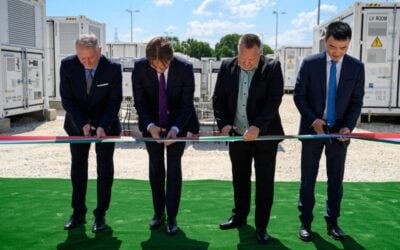
A 6MW / 48MWh battery energy storage system paired to a 15MW diesel generator has gone online on Nantucket, in what has been described by project owner National Grid as the biggest such system in New England to date.
The eight-hour duration Tesla-built system will help National Grid meet the Massachusetts island’s summer peak in electricity demand and shore up reliability of service for its customers in the area. As Energy-Storage.news reported when the project got the green light back in November 2017, it will also eliminate the need to build another expensive underwater supply cable to Nantucket.
Enjoy 12 months of exclusive analysis
- Regular insight and analysis of the industry’s biggest developments
- In-depth interviews with the industry’s leading figures
- Annual digital subscription to the PV Tech Power journal
- Discounts on Solar Media’s portfolio of events, in-person and virtual
There are currently two underwater cables supplying the island from Cape Cod, and the combined storage-plus-diesel solution could help meet local power demand if one of the two experiences an outage. According to National Grid, the project cost US$81 million.
“Energy storage projects like National Grid’s Battery Energy Storage System are a critical part of unlocking the full potential of clean energy and increasing the resiliency of the electrical grid,” Department of Energy Resources Commissioner Judith Judson said.
Massachusetts has been recently identified as perhaps the current hotspot for energy storage deployment in the US, with supportive policies built around the need to upgrade existing infrastructure and meet ambitious renewable energy and energy storage deployment targets, as well as specific climate-targeted policies such as the newly-introduced Clean Peak Standard.






